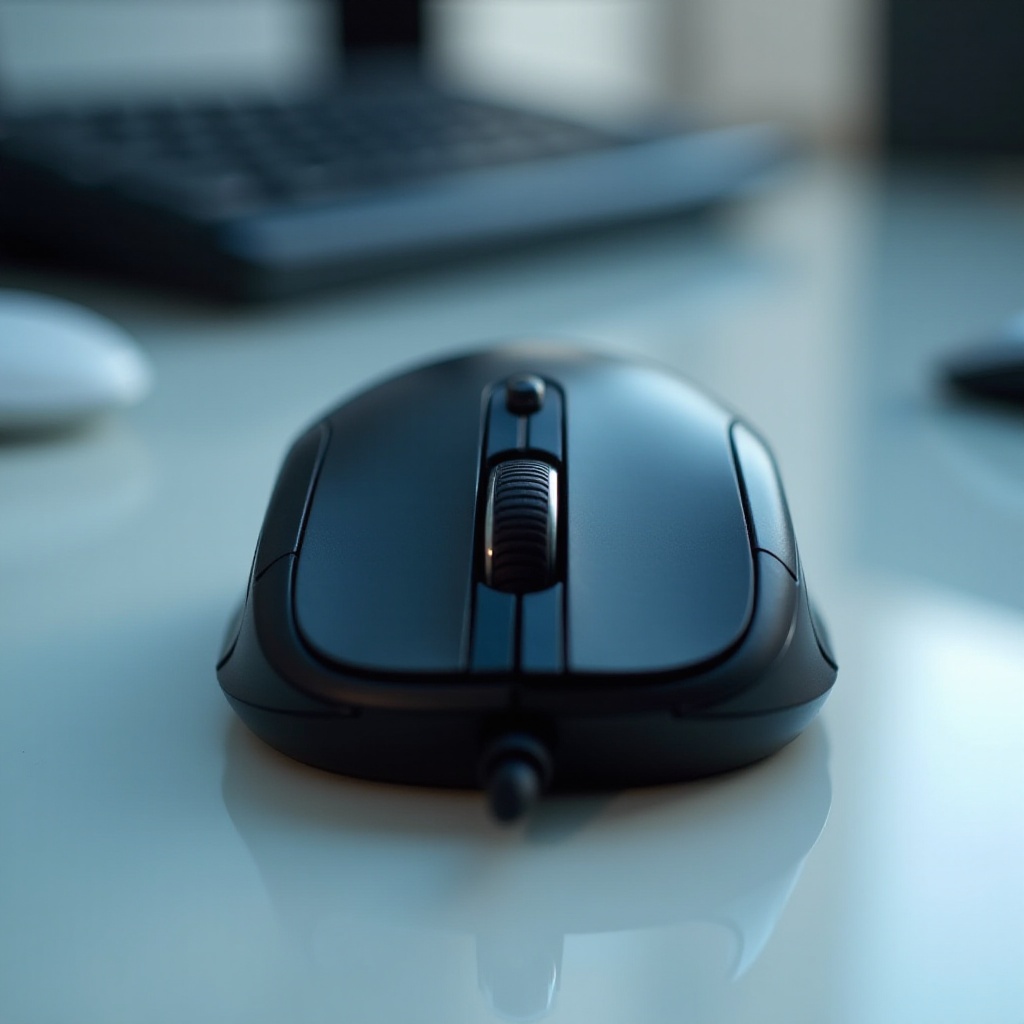Troubleshooting Guide: Computer Mouse Not Clicking Properly
Introduction
A computer mouse that's not clicking properly can be incredibly frustrating. Imagine being in the middle of an important task or gaming session, and your mouse fails to respond to clicks. This issue can stem from various factors, ranging from physical blockages to software glitches. Let's delve into a detailed guide to diagnose, troubleshoot, and resolve the problem of a computer mouse not clicking properly.

Diagnosing the Problem
Before diving into complex solutions, it's essential to diagnose the problem accurately. This initial step helps determine whether the issue is hardware or software-related.
Physical Inspection
Start with a physical inspection. Check the mouse for obvious signs of damage or wear. Look for any physical obstructions around the buttons that might prevent them from clicking. Dust, dirt, and debris can accumulate over time and hinder the mouse's functionality.
Testing on Different Devices
Next, connect your mouse to a different computer or device to see if the issue persists. If the mouse works fine on another device, the problem is likely with your computer. However, if the issue continues, the mouse itself may be faulty.
Checking USB Ports and Connections
Ensure that your mouse is correctly connected to the USB port. Loose or damaged connections can cause intermittent issues with clicking. Try using a different USB port or cable to see if that resolves the problem.
Transitioning from diagnosing physical issues, let’s move on to identifying software and driver complications which can also impact mouse functionality.

Software and Driver Issues
Once you’ve ruled out physical issues, it’s time to consider software and driver problems. Drivers are crucial for translating your mouse's hardware actions into computer actions.
Updating Mouse Drivers
Outdated or corrupted drivers can cause your mouse to malfunction. To update your mouse drivers:
- Go to Device Manager by right-clicking the Start button and selecting Device Manager.
- Find 'Mice and other pointing devices.
- Right-click your mouse and select 'Update driver.
- Choose 'Search automatically for updated driver software.
Reinstalling Mouse Drivers
If updating doesn't work, try reinstalling the driver:
- In Device Manager, right-click your mouse and select 'Uninstall device.
- Restart your computer. Windows should automatically reinstall the driver.
Checking for Software Conflicts
Software conflicts can also hinder mouse performance. Check for any recently installed software or updates that might be causing issues. System Restore can help revert your system to a point where the mouse was functioning correctly.
After ensuring your software and drivers are not the culprits, the next step is adjusting your mouse settings, which might be affecting its performance.
Adjusting Mouse Settings
Sometimes the problem lies within the mouse settings configured in your operating system.
Windows Mouse Settings
For Windows users:
- Go to Settings > Devices > Mouse.
- Adjust settings like 'Primary button,' 'Double-click speed,' and other related options.
Mac Mouse Settings
For Mac users:
- Go to System Preferences > Mouse.
- Adjust similar settings such as tracking speed and primary button assignment.
Adjusting Click Speed and Sensitivity
Both on Windows and Mac, adjusting the click speed and sensitivity can help. You might find that a lower or higher sensitivity setting can make the mouse clicks more responsive to your actions.
If adjusting the settings doesn’t alleviate the issue, regular cleaning and maintenance of your mouse might be needed to keep it functioning properly.
Cleaning and Maintenance
Regular cleaning and proper maintenance can prevent many common mouse problems.
Regular Cleaning Guidelines
Here’s a simple cleaning routine:
- Disconnect the mouse from the computer.
- Use a soft cloth dampened with a mild cleaning solution.
- Gently clean the surface and buttons.
- Avoid getting moisture inside the mouse.
Deep Cleaning Techniques
For a more thorough cleaning:
- Open the mouse casing, if possible.
- Carefully clean the internal components with compressed air.
- Remove any dust or debris lodged inside.
Preventive Maintenance
Preventive maintenance is essential:
- Store your mouse in a dust-free environment.
- Use a mouse pad to minimize dirt.
- Regularly check for software updates.
Let’s proceed to advanced troubleshooting techniques for persistent issues.
Advanced Troubleshooting
If basic troubleshooting doesn’t work, advanced methods may be necessary.
Checking for Malware and Viruses
Malware can disrupt mouse functionality. Use antivirus software to scan and remove any threats.
Mouse Firmware Update
Some mice come with firmware that can be updated. Check the manufacturer’s website for any available firmware updates and instructions.
Operating System Tweaks
Sometimes, the issue might be with the operating system itself. Ensure your OS is updated to the latest version. Consider tweaking system settings or using third-party software designed to fix peripheral issues.

Conclusion
Addressing a computer mouse not clicking properly involves diagnosing physical issues, updating drivers, adjusting settings, and maintaining cleanliness. Employing these troubleshooting steps will help you resolve the problem effectively.
Frequently Asked Questions
Why is my mouse not clicking properly even after updating the driver?
It could be a hardware issue or software conflict. Revisit other steps like checking USB ports or cleaning the mouse.
Can dust and dirt cause mouse clicking issues?
Yes, dust and dirt can obstruct mouse buttons and sensors, affecting performance.
Should I consider buying a new mouse if the problem persists?
If all troubleshooting steps fail, it might be time to purchase a new mouse to ensure seamless functionality.



